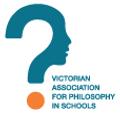Philosophy in Schools Readings

Thomas Wartenberg - Picture Book Philosophy
In the lead up to the VAPS Conference, we are wanting to introduce you all to our keynote presenters through our 'Philosophy in Schools Readings' page in the newsletter. Firstly, we have an article by Thomas Wartenberg about using Picture Books to do philosophy with young people.
Philip Cam - Teaching Ethics in Schools - A Book Review by Ho Wah Kam
It is important to note that Teaching Ethics In Schools has this as its subtitle“A new approach to moral education”, which promotes a fresh approach to moral education. As stressed in the book blurb, “Far from prescribing a rigid set of mandated values, codes of conduct, behaviour management plans, or religious instruction, Philip Cam skilfully presents ethical thinking and reasoning as a dynamic and essential aspect of school life”.
The book is divided into two sections – Part One and Part Two - preceded by a very useful introduction for the school teacher. Teachers trained in Philosophy for Children will find the introduction particularly relevant to their work.
The introduction focuses on the problem of moral education, the need for philosophy, developing good moral judgments and on to the core of the argument, which is teaching ethics through collaborative inquiry. The author explains: Since ethics is a branch of philosophy, the key to success in teaching it is to engage students philosophically, which involves reasoned inquiry into issues and ideas. It may be as elementary as learning to distinguish between moral and non-moral uses of a word such as ‘good’, or as advanced as determining whether the consequences of a given action are more (or less) morally significant than the intention with which a person acted. At any level, there is a vital difference between teaching ethics through inquiry and teaching it didactically. The latter gives students much to learn but little to reflect upon. The former shifts the emphasis from telling students what they should think about moral matters to helping them to think morally.
In Part One, the first two chapters draw on philosophy and the theoretical aspects of moral education in succinct terms to support teachers in their conceptual understanding of the issues. Chapter 1 ends by stating that attitudes to morality change, like everything else. The author adds,“It cannot be denied, however, that societies are always on the move — technologically, economically and socially. Education must keep pace with these changes and help us to manage them. Moral education is as much an ingredient in the advancement of society as is scientific and technological education and we need to take a forward-looking approach”. This “forward-looking approach” is elaborated on in Chapter 2, in which collaborative inquiry is stressed.
In fact, when we try to solve a moral problem of any complexity, we are often well-advised to discuss it with others. This reliance upon others applies equally to the objectives of moral inquiry in the classroom. If we want students to grow out of the habit of going with their own first thoughts, to be on the lookout for better alternatives, and to become disposed to consider other people’s points of view, then we cannot do better than having them learn by exploring moral issues, problems and ideas together. If we want them to become used to giving reasons for what they say, to expect the same of others and to make productive use of criticism, then we cannot go past giving them plenty of practice with their peers. And if we want them to grow up not to be so closed-minded as to think that those who disagree with them must be either ignorant or vicious, then the combination of intellectual and social engagement to be found in collaborative moral inquiry is just the thing. These are all good reasons for adopting this approach.
Chapter 3 is the “bridge” chapter between Part One and Part Three. It provides a useful introduction to ethics, ethical theories and ethical inquiry.
Ethics is the philosophical study of morality. It is concerned with the ends that we ought to choose and the considerations that should govern those choices, as well as with the kinds of people we should strive to be. Ethics is less interested in how people actually behave than with how they ought to behave. It seeks to understand the basis of moral obligation and the nature of ‘the good’.
Part Two consists of two practical chapters. Chapter 4 provides a guide to teaching ethics, focusing on topics such as working out the basic pattern of inquiry and how to make ethical inquiry collaborative. Chapter 5 deals with the construction of activities, discussion points and exercises for class use, methods of questioning, conceptual exploration and reasoning. Many of these activities and exercises are stimulus materials for teachers to adapt for and apply across different school subjects, in both primary and secondary schools.
In his book, Teaching Ethics In Schools, Philip Cam shows how an ethics-based approach to moral education can serve as a natural fit with current trends in education stressing citizenship education and character development.
